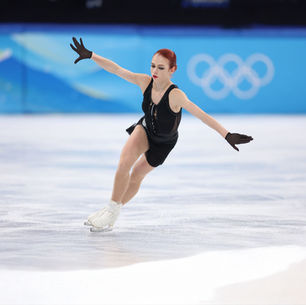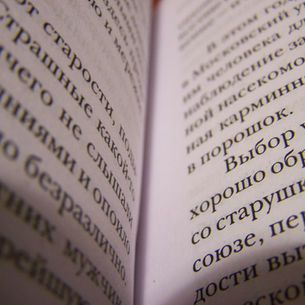Video Analysis Unleashed: Achieve Figure Skating Excellence
- Arnaud Muccini
- Apr 2, 2024
- 4 min read
Updated: Sep 23, 2024

Video analysis offers numerous advantages for figure skating coaches and their athletes:
1. Performance Evaluation
Video analysis allows coaches to assess their skaters' performances with unparalleled precision. By closely examining the footage, coaches can identify subtle nuances in technique, form, and execution that may not be immediately apparent during live performances. This detailed analysis enables coaches to pinpoint specific areas for improvement and tailor their training programs accordingly. Whether it's refining a jump technique, perfecting a spin position, or tweaking the timing of footwork sequences, video analysis provides coaches with invaluable insights to help their skaters reach their full potential.
2. Detailed Feedback
Reviewing footage frame by frame allows coaches to provide highly detailed feedback to athletes. This level of scrutiny enables coaches to break down complex movements into smaller components, making it easier for athletes to understand their strengths and weaknesses. By pinpointing specific moments in the performance where adjustments can be made, coaches can offer targeted guidance to help athletes improve. Whether it's analyzing the trajectory of a jump, the alignment of the body during a spin, or the timing of a transition, frame-by-frame analysis empowers coaches to provide actionable feedback that fosters continuous improvement in their athletes.

3. Visual Learning
Visual aids are invaluable for enhancing skaters' learning experiences. Skaters clearly understand their movements and how they compare to the desired technique or form by seeing themselves on video. This visual feedback helps skaters develop greater body awareness and proprioception, enabling them to make real-time adjustments to their performance. Furthermore, visual aids provide a concrete reference point for skaters to visualize their goals and track their progress over time. Whether perfecting their arms' position in a jump or maintaining proper posture throughout a routine, visual feedback from video analysis empowers skaters to refine their skills and strive for excellence in their performances.
4. Long-Term Progress Tracking
Video recordings are invaluable for coaches to track skaters' progress over time. By regularly recording and reviewing performances, coaches can observe changes and improvements in technique, form, and overall skill level. This longitudinal tracking allows coaches to set realistic long-term goals for their skaters and develop customized training plans to achieve them. Whether mastering a new element, increasing consistency in execution, or refining artistic expression, video recordings provide concrete evidence of progress and motivate both coaches and skaters. Additionally, tracking progress over time enables coaches to make informed adjustments to training programs, ensuring that skaters continue to develop and reach their full potential.
5. Comparative Analysis
Coaches can compare skaters' performances side by side, benchmarking against elite skaters or previous performances to identify areas for improvement.
6. Injury Prevention
Comparing skaters' performances side by side is a powerful technique for coaches. By benchmarking against elite skaters or previous performances, coaches can identify areas for improvement more effectively. This comparative analysis allows coaches to highlight differences in technique, execution, and artistic expression between their skaters, top performers, or past performances. Coaches can tailor their training strategies to address weaknesses and build upon strengths by pinpointing specific areas where their skaters fall short or excel. This approach provides valuable insights for improvement and inspires skaters to strive for excellence by showcasing the standards set by elite performers.
7. Remote Coaching
Indeed, technological advancements have revolutionized coaching practices, allowing coaches to analyze videos remotely and provide ongoing feedback to athletes, regardless of their location. Through video-sharing platforms, cloud storage, and video analysis software, coaches can access and review their athletes' performances in real-time or at their convenience. This enables coaches to maintain consistent communication with their athletes, offer timely feedback, and continue their coaching relationship effectively, even when they are physically apart. This remote coaching approach fosters flexibility, efficiency, and accessibility, ultimately enhancing coaches' and athletes' overall coaching experience.
8. Motivation
Visual evidence of progress serves as a powerful motivator for athletes. When athletes can see tangible improvements in their performances through video analysis, it reinforces their hard work and dedication, encouraging them to continue striving for excellence. Whether mastering a problematic element, refining technique, or achieving personal bests, seeing they're documenting their progressors athletes' confidence and self-belief. This positive reinforcement creates a cycle of motivation, driving athletes to push themselves further and pursue their goals with renewed determination. Ultimately, visual evidence of progress through video analysis validates athletes' efforts and inspires them to continue working hard and reaching greater heights in their sport.

9. Communication Tool
Video analysis is a highly effective communication tool for coaches to convey concepts and techniques to their athletes. By visually demonstrating desired movements, positions, and strategies through video footage, coaches can enhance athletes' understanding and comprehension of complex concepts. This visual representation allows athletes to see what is being taught, making it easier to grasp the nuances of technique and execution. Additionally, coaches can use video analysis to provide specific examples and visual cues that reinforce verbal instructions, further solidifying athletes' understanding. This multi-modal approach to coaching fosters more transparent communication, accelerates learning, and ultimately enhances athletes' overall performance on the ice.
10. Competition Preparation
Analyzing past performances or competitors' routines through video is a strategic tool for athletes preparing for upcoming competitions. By studying video footage, athletes can gain valuable insights into their strengths and weaknesses and those of their competitors. This allows them to tailor their training and competition strategies accordingly.
Here's how video analysis can aid in competition preparation:
1. Identifying Strengths and Weaknesses: Athletes can review their past performances to identify areas where they excel and areas that need improvement. Similarly, analyzing competitors' routines helps athletes understand their opponents' strengths and weaknesses.
2. Strategic Planning: Armed with insights from video analysis, athletes can develop strategic plans to capitalize on their strengths and exploit their competitors' weaknesses. This may involve adjusting technical elements, choreography, or performance timing.
3. Refining Tactics: Video analysis enables athletes to refine their competitive tactical approach. By studying competitors' routines, athletes can anticipate their moves and develop counterstrategies to gain a competitive edge.
4. Building Confidence: Reviewing successful performances from the past can boost athletes' confidence and morale leading up to competitions. Additionally, identifying areas for improvement helps athletes focus their training efforts effectively.
5. Adapting to Conditions: Video analysis allows athletes to familiarize themselves with the competition environment, such as ice conditions, rink layout, and lighting. This helps athletes adapt their routines accordingly and perform at their best on competition day.
Overall, video analysis is a valuable tool for athletes to prepare for competitions, enabling them to identify strengths strategically,























Comments